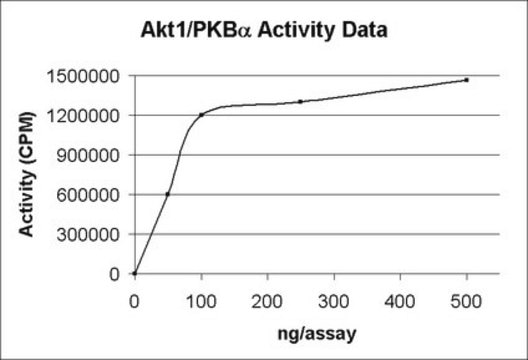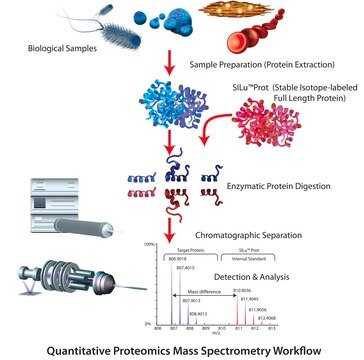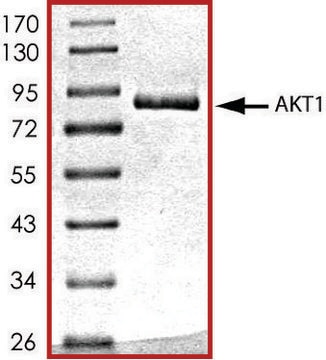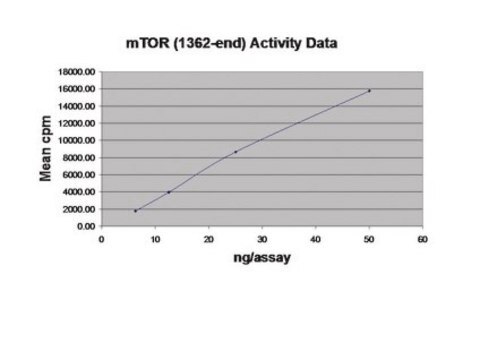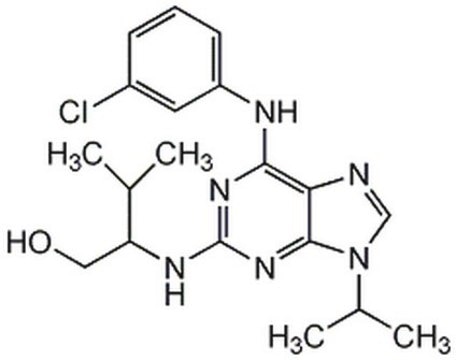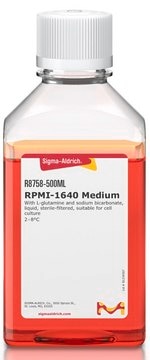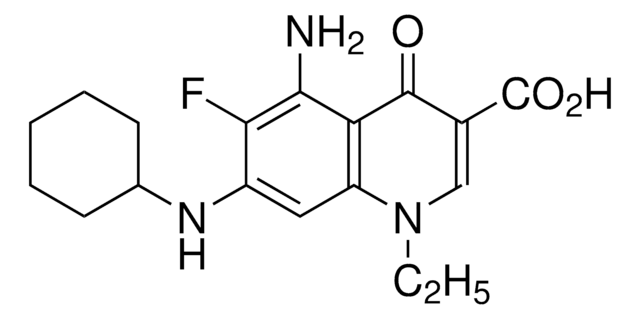SRP0353
Akt1 active human
recombinant, expressed in baculovirus infected Sf9 cells, ≥75% (SDS-PAGE)
Synonym(s):
PKB, RAC, v-akt murine thymoma viral oncogene homolog 1
Sign Into View Organizational & Contract Pricing
All Photos(1)
About This Item
UNSPSC Code:
12352202
NACRES:
NA.32
Recommended Products
biological source
human
recombinant
expressed in baculovirus infected Sf9 cells
assay
≥75% (SDS-PAGE)
form
aqueous solution
mol wt
60.2 kDa
packaging
pkg of 10 μg
NCBI accession no.
UniProt accession no.
shipped in
dry ice
storage temp.
−70°C
Gene Information
human ... AKT1(207)
General description
AKT1 (v-akt murine thymoma viral oncogene homolog 1) is a Ser/Thr protein kinase, and is also called protein kinase B (PKB). This protein is activated when it is phosphorylated at serine 473 and threonine 308. This gene is localized to human chromosome 14q32.32.
Application
Akt1 active human has been used for the testing of recombinant mouse p21 proteins as its substrates using in vitro protein kinase assay.
Biochem/physiol Actions
AKT1 (v-akt murine thymoma viral oncogene homolog 1) is responsible for the phosphorylation and cytoplasmic localization of CKDN1A (cyclin-dependent kinase (CDK) inhibitor 1, also referred to as p21). However, p21 is one of the CDKNs which normally resides in the nucleus and its cytoplasmic localization, mediated by AKT1, is common to various cancers where it suppresses proteins essential for apoptosis. Studies show that up-regulation of AKT1 serves as a poor prognostic marker in breast cancer, which however, depends upon factors including population, hormone receptor status, and hormonal or trastuzumab therapy status.
signalword
Danger
hcodes
Hazard Classifications
Eye Irrit. 2 - Repr. 1B - Skin Irrit. 2
wgk_germany
WGK 1
flash_point_f
Not applicable
flash_point_c
Not applicable
Certificates of Analysis (COA)
Search for Certificates of Analysis (COA) by entering the products Lot/Batch Number. Lot and Batch Numbers can be found on a product’s label following the words ‘Lot’ or ‘Batch’.
Already Own This Product?
Find documentation for the products that you have recently purchased in the Document Library.
Vogiatzi P and Giordano A.
Cancer Biology & Therapy, 6 (2007)
Coenraad Kuijl et al.
Nature, 450(7170), 725-730 (2007-11-30)
With the emergence of multidrug resistant (MDR) bacteria, it is imperative to develop new intervention strategies. Current antibiotics typically target pathogen rather than host-specific biochemical pathways. Here we have developed kinase inhibitors that prevent intracellular growth of unrelated pathogens such
Edgar Gil Rizzatti et al.
British journal of haematology, 130(4), 516-526 (2005-08-16)
Microarray studies have revealed the differential expression of several genes in mantle cell lymphoma (MCL), but it is unknown which of these differences are dependent on the transformed MCL cell itself or on the tumour microenvironment. To investigate which genes
Zu-Yao Yang et al.
Scientific reports, 5, 7758-7758 (2015-01-15)
The prognostic value of phosphorylated Akt (pAkt) overexpression in breast cancer has been investigated by many studies with inconsistent results. This systematic review was conducted to evaluate the association of pAkt overexpression with breast cancer prognosis in terms of overall
Christelle de Renty et al.
PloS one, 9(5), e97434-e97434 (2014-05-23)
Proliferating trophoblast stem cells (TSCs) can differentiate into nonproliferating but viable trophoblast giant cells (TGCs) that are resistant to DNA damage induced apoptosis. Differentiation is associated with selective up-regulation of the Cip/Kip cyclin-dependent kinase inhibitors p57 and p21; expression of
Our team of scientists has experience in all areas of research including Life Science, Material Science, Chemical Synthesis, Chromatography, Analytical and many others.
Contact Technical Service